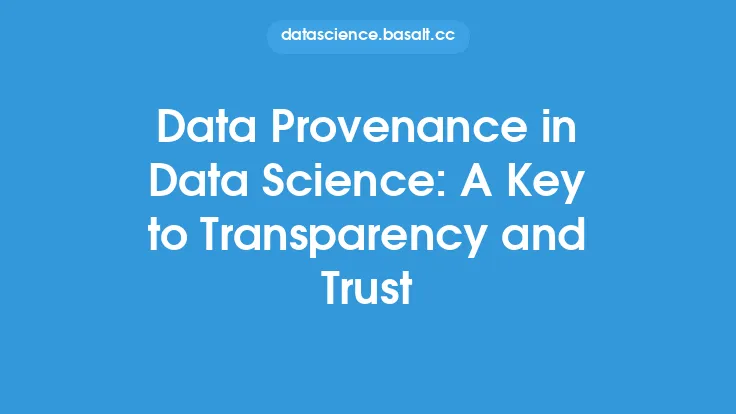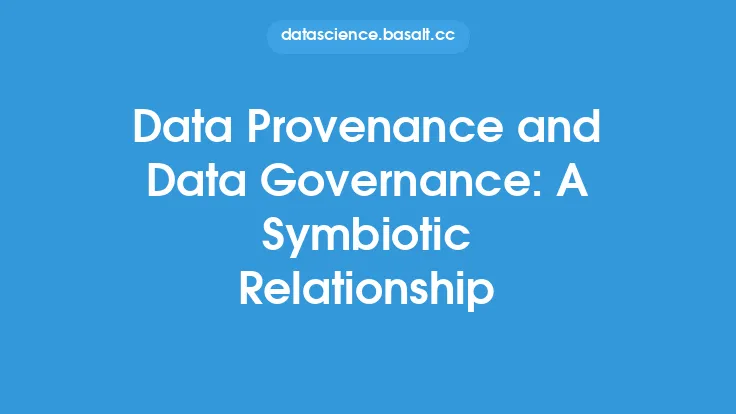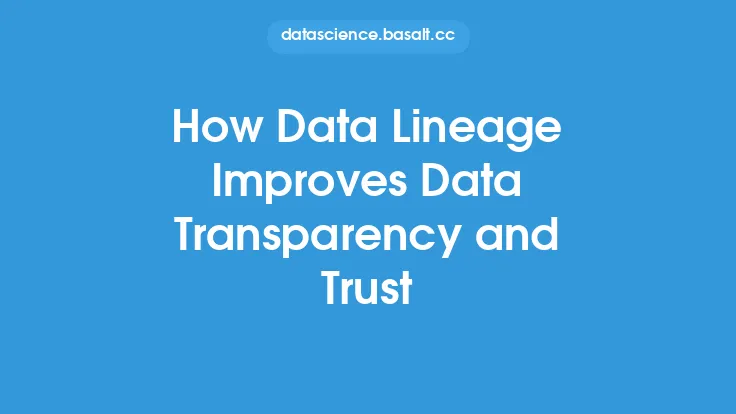Data architecture is a crucial aspect of data engineering, as it provides a framework for organizing, storing, and managing data within an organization. One key concept in data architecture is data lineage, which refers to the process of tracking the origin, movement, and transformation of data throughout its lifecycle. Understanding data lineage is essential for ensuring data quality, integrity, and reliability, as well as for meeting regulatory and compliance requirements. In this article, we will delve into the concept of data lineage and its relationship to data provenance, exploring the technical and practical aspects of this critical aspect of data architecture.
Introduction to Data Lineage
Data lineage is the process of tracking the origin, movement, and transformation of data throughout its lifecycle. This includes understanding where the data came from, how it was collected, processed, and transformed, and where it is stored. Data lineage is essential for ensuring data quality, as it allows organizations to identify errors, inconsistencies, and anomalies in the data. It also enables organizations to track the history of the data, including any changes or updates made to it over time. By understanding data lineage, organizations can ensure that their data is accurate, reliable, and trustworthy.
Data Provenance
Data provenance refers to the documentation of the origin, history, and ownership of data. It provides a record of the data's creation, processing, and transformation, as well as any changes or updates made to it over time. Data provenance is essential for ensuring data integrity, as it allows organizations to track the data's movement and transformation throughout its lifecycle. This includes understanding who created the data, when it was created, and how it was processed and transformed. Data provenance also provides a record of any errors or inconsistencies in the data, allowing organizations to identify and correct them.
Technical Aspects of Data Lineage
From a technical perspective, data lineage involves tracking the movement and transformation of data throughout its lifecycle. This can be achieved through the use of metadata, which provides a description of the data, including its origin, format, and structure. Metadata can be used to track the data's movement and transformation, as well as any changes or updates made to it over time. There are several technical approaches to implementing data lineage, including:
- Data cataloging: This involves creating a catalog of metadata that describes the data, including its origin, format, and structure.
- Data mapping: This involves creating a map of the data's movement and transformation throughout its lifecycle.
- Data tracking: This involves tracking the data's movement and transformation in real-time, using tools such as data integration platforms and data quality software.
Benefits of Data Lineage
The benefits of data lineage are numerous, and include:
- Improved data quality: By tracking the origin, movement, and transformation of data, organizations can identify errors, inconsistencies, and anomalies in the data.
- Increased data integrity: By documenting the origin, history, and ownership of data, organizations can ensure that their data is accurate, reliable, and trustworthy.
- Enhanced regulatory compliance: By tracking the data's movement and transformation, organizations can demonstrate compliance with regulatory requirements, such as data privacy and data protection laws.
- Better decision-making: By providing a clear understanding of the data's origin, movement, and transformation, data lineage enables organizations to make informed decisions based on accurate and reliable data.
Challenges and Limitations
While data lineage is a critical aspect of data architecture, there are several challenges and limitations to implementing it. These include:
- Data complexity: As data becomes increasingly complex and diverse, it can be challenging to track its movement and transformation.
- Data volume: As the volume of data increases, it can be challenging to track and manage the data's movement and transformation.
- Data velocity: As the velocity of data increases, it can be challenging to track and manage the data's movement and transformation in real-time.
- Lack of standardization: The lack of standardization in data formats and structures can make it challenging to implement data lineage.
Best Practices for Implementing Data Lineage
To implement data lineage effectively, organizations should follow several best practices, including:
- Develop a data governance framework: This involves establishing policies, procedures, and standards for managing data throughout its lifecycle.
- Implement data cataloging and mapping: This involves creating a catalog of metadata that describes the data, including its origin, format, and structure, and creating a map of the data's movement and transformation.
- Use data tracking and monitoring tools: This involves using tools such as data integration platforms and data quality software to track the data's movement and transformation in real-time.
- Establish data quality and integrity processes: This involves establishing processes for ensuring data quality and integrity, including data validation, data cleansing, and data normalization.
Conclusion
In conclusion, data lineage is a critical aspect of data architecture, as it provides a framework for tracking the origin, movement, and transformation of data throughout its lifecycle. By understanding data lineage and data provenance, organizations can ensure data quality, integrity, and reliability, as well as meet regulatory and compliance requirements. While there are several challenges and limitations to implementing data lineage, following best practices such as developing a data governance framework, implementing data cataloging and mapping, using data tracking and monitoring tools, and establishing data quality and integrity processes can help organizations to overcome these challenges and achieve the benefits of data lineage.




